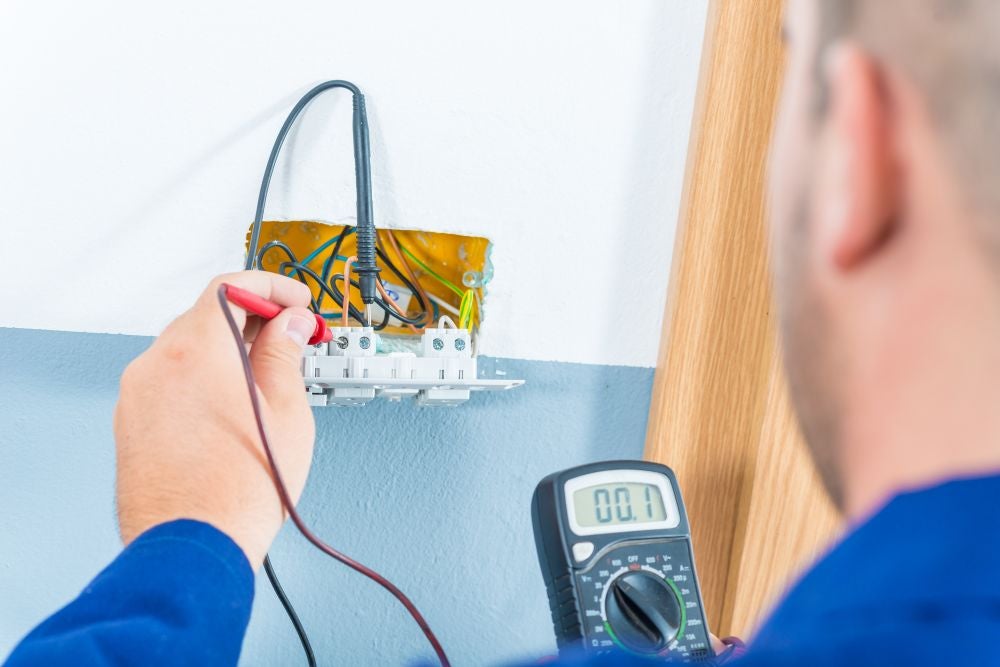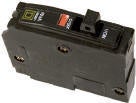-
Things To Consider Before Installing an EV Charger
What You Need to Know for a Home EV Charger Installation
Consumer demand for electric vehicles (EVs) continues to skyrocket. More and more families in the U.S. are choosing the sustainability and lower operating costs they offer. With EV ownership comes the convenience of a home EV charger installation. They allow users to recharge efficiently and avoid depending on public charging stations. Trust Dalcon Electric in San Jose, CA, to guide your home EV charger installation process in a safe, cost-effective manner.

Choosing the Right EV Charger for Your Home
Selecting the right EV charger is essential in preparing your home for electric vehicle charging. Home chargers are available in three main types, each offering specific benefits depending on your budget or needs, including:
- Level 1 Chargers: These connect to a standard 120-volt outlet and are great for light charging needs. They typically add about 3–5 miles of range per hour, making them best suited for overnight charging.
- Level 2 Chargers: These chargers require a 240-volt outlet and deliver 20–30 miles of range per hour. They are perfect for quick recharges and meet most homeowners’ needs.
- Level 3 Chargers: These DC chargers charge vehicles in minutes but are rarely used for home installations due to higher costs.
Assessing Your Home’s Electrical System
Before starting your EV charger installation, make sure your home’s electrical system is ready. An assessment ensures your setup can handle the extra power needs of an EV charger. Some important factors to review include:
- Your Electrical Panel Capacity: Confirm your panel can support an EV charger without overloading.
- Possible Upgrades Required: Some homes may need a panel upgrade to meet EV charger installation requirements.
- Professional Evaluation: Hire a licensed electrician to assess your system’s readiness. They’ll confirm if upgrades are needed and ensure a safe EV charging installation.
Permits and Requirements for EV Charger Installation
Installing an EV charger at home in San Jose, CA, requires following specific regulations. Proper planning ensures a smooth process, avoids delays, and guarantees compliance. Stay informed and prepared to streamline the installation. There are several key requirements homeowners need to consider, such as:
- Getting the Required Permits: Obtain permits to install the necessary wiring for your EV charger.
- Local Building Codes: Follow California building codes, especially for multifamily properties.
- Utility Guidelines: Meet local utility provider requirements for safe and efficient operation.
- Clearance: Check placement rules for garages, driveways, or other areas.
EV Charger Installation Costs in California
Planning your EV charging installation includes budgeting for several key expenses. The good news is California has rebates that many residents are eligible for, such as the Clean Cars 4 All program. Typical costs associated with home EV charger installation across California include:
- Charger Unit Costs: Level 1 chargers typically cost $300 to $600. Level 2 chargers, depending on the brand and features, generally cost between $600 and $1,200.
- Installation Labor: Installations typically cost between $300 and $1200. However, this can increase depending on your home’s electrical setup and other complexities.
- Permits and Fees: Fees range from $100 to $300, depending on local requirements.
- Electrical Upgrades: Panel upgrades or rewiring, often required in older homes, may add $1,000 to $3,000 to your project.
Essential EV Charger Installation Requirements
Proper EV charger installation ensures safety and efficiency for your home setup. Following key guidelines helps create a reliable and durable charging system. Be sure to keep these considerations in mind:
- Your Designated Outlet Location: Install near your parking spot for convenient access and minimal cord usage.
- Proper Grounding Guidance: Ensure your electrical system is grounded to prevent safety hazards.
- Height and Mounting: Follow guidelines for wall or pedestal installations to ensure accessibility and security.
- Code Compliance: Your installation must meet National Electric Code (NEC) requirements for a safe, legal installation.
Choosing the Right Location for Installation
Picking the best location for your EV charger at home is key to convenience and efficiency. A professional electrician can help select a location that balances practicality and safety. They will guide you on factors such as:
- Proximity to Your Vehicle: Aim to place the charger close to your parking spot for a seamless connection.
- Weather Exposure: Position the charger in a sheltered area to protect it from rain or extreme heat.
- Space Efficiency: Choose a spot that won’t obstruct your garage or driveway.
Why Hiring a Qualified Electrician Matters
The success of your EV charging installation hinges on having a trusted electrician like Dalcon Electric handle the process. Professionals bring expertise to the table while ensuring compliance with local codes. Benefits of hiring a qualified EV charger installation electrician include:
- Accurate Assessments: Evaluating your home’s electrical system and determining necessary upgrades. Our team provides home safety inspections with every job for your peace of mind.
- A Safe Installation: Reduced fire risks, incorrect connections, or tripped circuits.
- Time-Saving Service: Proper setup is completed efficiently, with minimal disruptions.
- Warranty Protection: Ensuring your EV charger’s warranty remains intact through certified installation.
Contact Dalcon Electric for EV Charging Installation Today
Installing an EV charger at home is a wise investment for efficient, convenient car ownership. When it comes to EV charger installation in San Jose, CA, Dalcon Electric offers unmatched service. With over 30 years of experience serving our community and 24/7 support, we ensure high-quality installations you can rely on. Don’t wait to make the switch to streamlined charging at home. Schedule a consultation today to for your EV charger installation.
-
Important Reasons to Use a Licensed Electrical Contractor
Why You Should Always Use a Licensed Electrician
Hiring a professional for electrical work is one of the most important decisions a homeowner can make. Electrical systems are complex, and improper work can compromise your safety and your home’s value. Trust Dalcon Electric in San Jose, CA, when you need a licensed electrician. A licensed and bonded electrician ensures you receive expert assistance, safe installations, and peace of mind.

What Does an Electrician License Signify?
When you hire a licensed electrician, you get a professional who has met industry and government standards. Here are some qualifications that come with a registered electrician license:
- Extensive Training: Licensed electricians complete rigorous training, including apprenticeships and classroom education.
- Exams and Certification: They pass competency exams to verify their skills and knowledge.
- Regulation Compliance: They stay up to date with codes and regulations to meet safety and legal standards.
- Continuing Education: Ongoing education ensures their expertise evolves with industry advancements.
Safety Matters
Electrical work comes with inherent risks if not executed correctly. Faulty home wiring or poor installations can lead to electrical shocks, fires, or system failures. Licensed electricians prioritize safety by complying with strict safety codes and guidelines. They inspect your home’s electrical system, identify risks, and ensure all work adheres to the National Electrical Code (NEC). With a licensed electrical contractor, you don’t have to worry about hidden hazards that could jeopardize your family.
Extensive Expertise and Training
Licensed electricians possess the practical skills and high-level knowledge to fix electrical issues or complete complex installations. Their training covers a wide range of areas, including wiring systems, circuit breakers, lighting, and advanced diagnostic tools. This expertise allows them to address unique challenges and complete tasks efficiently. A professional should use the latest techniques and tools to provide the highest quality of work.
Insurance and Liability Protection
There’s more to hiring a licensed and insured electrician than just their expertise. Licensed contractors protect homeowners from unforeseen liabilities. Here’s how insurance benefits you:
- Property Protection: Insurance typically covers the cost of accidental property damage.
- Worker Coverage: Liability insurance ensures you aren’t responsible if an electrician is injured while working on your property.
- Guaranteed Service Quality: Licensed contractors are insured to safeguard your investment and home.
High-Quality Workmanship
Craftsmanship makes all the difference, especially when it comes to electrical work. A residential licensed electrician ensures top-quality workmanship in every project. They will take the time to correctly measure, install, and test systems to ensure their effectiveness now and avoid potential problems down the line. This attention to detail helps to maintain your home’s electrical system and avoid expensive repairs, making it worth your time and safety.
Compliance With Electrical Codes
Electrical codes will change regularly to meet evolving safety standards. Licensed electricians will be well-versed in these updates and apply them to their work. Their expertise ensures your electrical installations and repairs meet local building codes, especially in San Jose, CA. Non-compliance with codes can lead to setbacks in construction, fines, or even legal liability. By hiring a licensed contractor, you avoid these headaches and know that any electrical system inspections or approvals will be smooth.
Warranties and Guarantees
Every homeowner deserves the reassurance that their investment is protected. Licensed electrical contractors often provide warranties and guarantees for their work. Warranties highlight the confidence that professionals have in their skills and materials. For homeowners, it’s an added layer of trust that ensures peace of mind.
Peace of Mind for Homeowners
When you hire a licensed and bonded electrician like Dalcon Electric, you gain more than just functional wiring or new lighting fixtures. You gain peace of mind. These experts not only put your home in safe hands but also assure that every fixture, socket, and wire is as reliable as possible. With a trusted professional by your side, you can focus on enjoying your home without worry.
Choose a Licensed Electrician in San Jose
Whether you need a small repair or a major installation, choosing a licensed and insured electrician is essential for your safety and your home’s value. Dalcon Electric offers over 30 years of expertise for homeowners in San Jose, CA. Our team prides itself on exceptional service, including 24/7 emergency support. We also provide free home safety inspections with every job to help protect your home and family with top-tier electrical solutions. Hire a professional you can trust, and contact us today.
-
The Importance of Electrical Safety Inspections
Many property owners believe electrical inspections are solely reserved for detecting and diagnosing electrical faults. However, that is not the case. To empower customers to uphold the electrical performance and safety of their San Jose, CA properties, Dalcon Electric is here to explore the importance of electrical safety inspections.
Your Source for Electrical Excellence
From whole-house rewiring to commercial energy-saving solutions, Dalcon Electric is your source for electrical service excellence. Backed by a legacy of trusted expertise, we prioritize our customers’ safety and the efficiency of their properties. Partner with us for the highest standards of quality electrical services in San Jose, CA.

Understanding Electrical Safety Inspections
Electrical safety is non-negotiable for industrial, commercial, and residential properties. Faulty wiring, non-compliant electrical features, and outdated systems can lead to costly damage, health and safety risks, and monetary fines. Routine electrical safety inspection services are paramount to mitigate these concerns and maintain a reliable and secure electrical system.
What Are Electrical Safety Inspections?
Electrical safety inspections are proactive and preventative services designed for homes and businesses alike. These detailed assessments involve inspecting and testing each component within an electrical system to ensure code compliance, safety, and functionality. The results generated through electrical safety inspection services serve as roadmaps for projected repairs or upgrades.
When to Pursue Electrical Home Safety Inspections
Electrical safety inspections are not a one-off service. They should be factored into your property maintenance plans every three to five years to ensure code compliance as regulations evolve and continued safety as your system ages. It is also vital to pursue electrical home safety inspections when purchasing or renovating a property.
When to Schedule an Industrial Electrical Safety Inspection
It’s essential to schedule an initial commercial or industrial electrical safety inspection when purchasing a new business property, followed by regular inspections every three to five years. Visual inspections are also advised annually to detect wear. Furthermore, inspections are imperative when remodeling or introducing new electrical equipment.
The Importance of Electrical Safety Inspections
The importance of electrical safety inspections cannot be overstated. These proactive solutions are your first line of defense against significant property damage, safety risks, and non-compliance. Staying up to date with your safety inspection needs also enhances the lifespan of your electrical system, combating premature wear and unnecessary expenditure.
Prioritize Sustainable Safety
Perhaps the most impactful component of electrical safety inspections is the reinforced security these solutions bring to your home or business. These services allow experts to promptly detect and correct electrical faults to reduce the risk of electrical fires and electrocution that may otherwise result in severe injuries or even fatalities.
Regulatory Compliance
Regulatory compliance with local and national electrical codes is imperative to homes and businesses alike. As these regulations are constantly evolving, it can be challenging to remain compliant without routine electrical safety inspections. Failure to adhere to these regulations can result in monetary fines and rejected insurance claims in the event of electrical fires or damage.
Enhanced Energy Efficiency
Without maintenance, worn or faulty electrical components have to work twice as hard to get the job done. As a result, you may be faced with increased electrical bills. Electrical safety inspections can mitigate this risk, promoting cost savings by identifying and correcting electrical inefficiencies that may be contributing to energy waste.
Obtain a Better Insurance Premium
Insurance companies appreciate property owners who pursue regular electrical safety inspections. They view properties protected by electrical safety inspections as less of a liability. In fact, if you can provide evidence of routine inspection services, your insurance company may be willing to offer you a reduced premium.
Boost Your Property Value
The upgrades derived from electrical safety inspections may seem like an unnecessary expense. In contrast, these replacements and repairs are wise and cost-effective investments. A well-maintained electrical system equipped with the latest electrical features can boost your property value.
Combat Repairs & Premature Replacements
Among the benefits of electrical safety inspection services is the chance to combat repairs and premature replacements. Safety inspections identify faulty electrical equipment and opportunities for upgrades, contributing to the longevity and reliability of your electrical system and reducing the risk of unexpected malfunctions and complete system overhauls.
The Benefits of Electrical Safety Inspection Services
To recap the many pertinent factors that contribute to the importance of electrical safety inspections, let’s review the benefits. The benefits of these crucial, preventative maintenance services include:
1) Protection and safety of residents/occupants
2) Electrical system efficiency and longevity
3) Increased property value
4) Reduced insurance rates
5) Regulatory compliance
6) Cost-effective and value-addingWhat’s Included In Electrical Safety Inspection Services
We offer multipoint electrical safety inspection services. These in-depth assessments cover every part of your electrical system, including:
1) Evaluation of electrical component installation and performance
2) Testing of outlets, fixtures, and appliances
3) Wiring inspections to detect wear/damage
4) Verifying wiring insulation
5) Detecting overloaded wiring and sockets
6) Verifying proper bonding and grounding
7) Ensuring proper circuit protection
8) Detecting electrical non-compliance and upgradesOur Electrical Safety Inspection Process
At Dalcon Electric, we prioritize full-service solutions and meticulous attention to detail. Our electrical safety inspections involve a comprehensive assessment of your entire electrical system, circuits, and associated components to identify symptoms of wear, damage, fire hazards, and non-compliance. From there, we develop a report that features our upgrade and/or repair recommendations.
Electrical Code Compliance Standards
Homes and businesses must adhere to local codes and the National Electric Code (NEC). The NEC is updated every three years to promote optimal electrical protection for residential and commercial properties. At Dalcon Electric, our experts are familiar with this ever-evolving code and are prepared to upgrade your property to meet the current standards.
Electrical Safety Upgrades
Following electrical safety inspections, our experts provide property owners with a detailed outline of recommended upgrades. These upgrades often include:
Electrical panel upgrades
Minor electrical repairs1) GFCI outlet installation/replacement
2) Rewiring
3) Surge protector installation
4) Tamper-proof outlet installation
5) Circuit breaker replacement
6) Dedicated circuit installationSchedule the Best Electrical Home Safety Inspection
Invest in sustainable safety with Dalcon Electric in San Jose, CA. Our commercial and residential electrical safety inspection services preserve and enhance your electrical system for years of uninterrupted performance, compliance, and protection. To get started, contact our friendly team to schedule your electrical safety inspection today.
-
How is Aluminum Wiring Dangerous and What to Do About It
Replacing Dangerous Aluminum Wiring with Copper Wiring
The Risks of Aluminum Wiring
If your home was built between 1965 and 1974 with aluminum wiring, you’re at a high risk of a fire hazard. Copper wiring prices in the late 1960s spiked, leading many builders to find a less expensive alternative to wiring. Aluminum wiring fit the bill, but many builders didn’t realize it couldn’t conduct electricity as well and ran hotter than copper wiring. Aluminum wiring’s issues with oxidation and corrosion make it more prone to contraction and expansion, leading to fire hazards. The good news is that Dalcon Electric can help clients with aluminum wiring. Our team in San Jose, CA, and the surrounding areas will replace it with safer options. For over 30 years, we’ve provided the area with education and installation of the highest quality electrical systems. Contact us to learn more!
How Can I Tell if My Home Has Aluminum Wiring?
The easiest way to check if you have aluminum wiring is to look at your electrical panel or cables. There should be visible labeling with “AL”, “ALUM,” or “ALUMINUM.” The most important thing is to ensure you do not touch the wiring while looking for the labels. There should be a plastic sheath to protect you from electric shock, but it’s essential to proceed with caution. Our team of professionals can perform an electrical inspection to check your switches, fixtures, panelboard, receptacles, and appliance connections. We’ll check for discolored or loose connections and melted insulation.

Dangers of Aluminum Wiring Detection
The Consumer Product Safety Commission suggests any homes built before 1972 with aluminum wiring are 55 times more likely to reach fire hazard conditions. Signs of deterioration and overheating of aluminum wiring include:
- Buzzing sounds in outlets
- Hot cover plates
- The smell of burning plastic
- Discoloration of switches
- Flickering Lights
- Loose outlets
Dalcon Electric’s Whole House Rewiring Services
Our Dalcon Electric team is passionate about ensuring your home’s electrical system is as safe and dependable as possible. Our whole house rewiring services are often necessary when your home’s wiring is not up to code or presents a fire hazard. We understand the dangers of aluminum wiring and are here for your wiring needs. We offer free home safety assessments to inspect your wiring system.
Going Beyond Wiring for Your Safety
Removing and replacing your aluminum wiring with copper wiring is a tedious job that is meant for professionals. Never try to take it on yourself. Our licensed electricians have over three decades of experience and training in rewiring homes and businesses. We go beyond simply changing the wiring in your walls. We replace electrical panels, upgrade sockets and light switches, and inspect all areas of your home for better wiring protection.
Contact Dalcon Electric for More Info Today
Dalcon Electric is here to ensure you feel safe and secure in your home using your electricity. Our team is highly trained to grant you the confidence to feel safe with your wiring. If your home was built between 1965 and 1974, contact us to inquire about aluminum wiring removal. We’ll ensure your home’s electrical system is code compliant today!
-
Resetting Circuit Breakers
Resetting Circuit Breakers
 The first thing to understand is that a circuit breaker can have tripped off even when it looks like it’s in the “ON” position. This is because a circuit breaker will sometimes trip off internally, without the “ON/OFF” handle flipping to the “OFF” position.
The first thing to understand is that a circuit breaker can have tripped off even when it looks like it’s in the “ON” position. This is because a circuit breaker will sometimes trip off internally, without the “ON/OFF” handle flipping to the “OFF” position.This is what to do when you have a loss of power that you suspect may be caused by a tripped circuit breaker.
1. Shut down any computer equipment that may be affected by a loss of power.
2. Go to your circuit breaker panel and firmly flip the first breaker OFF and then back ON again.
3. Do the same thing with each circuit breaker until you have flipped all of the circuit breakers OFF and then back ON again.
4. Now check and see whether the device that didn’t have power is now back on again.
5. If your power has been restored… you’re done! If your power is still out, it’s time to call an electrician.
Note: About 25% of all electrical power problems can be solved using the above technique. Good Luck!
More Technical Stuff About Circuit Breakers
Inside most circuit breakers there are two types of protection: One is thermal. The other is magnetic. The thermal strip measures heat build-up caused by overloading. When it reaches a certain temperature, it will shut off the breaker. The magnetic coil measures sudden increases in current (such as a short). At a predetermined limit it will shut the breaker off. Older breakers sometimes have only one of these features. For maximum protection, a breaker with both types of protection is recommended.
There are usually three spots on the outside of a breaker that show wear. If the “ON/OFF” switch (located at the top) has broken off or is loose, we recommend the breaker be replaced. Next is the load lug. If it is burnt or abnormally loose, we recommend the breaker be replaced. Last, and most common, is the stab. The breaker stab is what makes contact with the bussing in the panel (the bussing carries the power throughout the panel). The stab connects to the bussing through friction and spring tension. The spring tension, over time, may break down. If so, arcing or burning may result. If the stab has become burnt, discolored, or is abnormally loose, we recommend that the breaker be replaced and that the bussing in the panel be checked.
NOTE: It is possible for a breaker to appear OK in regard to it’s outward appearance and its capacity to carry continuity, but still be questionable, bad, or intermittent. The opposite may be true as well. A breaker with a poor outward appearance may be perfectly safe and structurally sound. Therefore a decision to replace a breaker should not be based solely on appearance, continuity, age, etc. A good electrician can recommend the proper course of action based on taking into account all the relevant factors.
-
Telephone Power
Telephone Power
When power goes out in your home, remember, YOUR CORDLESS PHONE WILL NOT WORK IF THE PHONE’S BASE UNIT HAS NO POWER. However, if this happens you can still use any telephone that is plugged directly into a telephone outlet.
